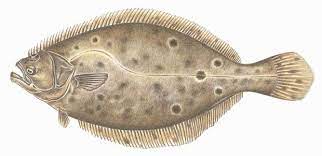Introduction
Ahoy, fellow anglers! If you’re on the quest to catch the elusive Flounder and Fluke, get ready to dive into the world of flattie fishing. As an expert angler with a passion for these elusive species, I’m excited to share with you the best techniques and tactics that will bring you closer to the catch of a lifetime. From live bait to specialized rigs and lures, we’ll explore everything you need to know to outsmart these cunning bottom-dwellers. So, let’s flatten the learning curve and embark on a fluking and floundering adventure like never before!
Section 1: Using Live Bait for Flounder and Fluke
When it comes to enticing these stealthy flatfish, live bait is a tried and tested method that never goes out of style. Flounder and Fluke are opportunistic predators, and using live bait presents an irresistible treat that they can’t resist. Some top live bait choices include:
- Minnows: Small live minnows, such as spot or killifish, make excellent offerings for Flounder and Fluke. Hook them through the lips or just behind the dorsal fin to keep them lively and enticing.
- Mullet: Larger mullet are a favorite for targeting bigger Flounder and Fluke. Hook them through the lips or tail and let them swim naturally.
- Squid: Although not live, using fresh or frozen squid as bait can also yield successful results. Flounder and Fluke are attracted to the scent and movement of squid, making it an effective alternative.
Section 2: Dead or Frozen Bait for Flounder and Fluke
If live bait isn’t readily available, don’t worry! Dead or frozen bait can also entice these flatfish. Here are some great options to consider:
- Gulp! Baits: Gulp! baits are lifelike soft plastic baits infused with a powerful scent. They imitate the appearance and movement of live bait, making them a highly effective option for Flounder and Fluke.
- Strip Baits: Strips of fresh or frozen fish, such as mullet, mackerel, or squid, can be cut and used as bait. Thread them onto your hook to create a tantalizing presentation.
- Bucktail Jigs: Combining a bucktail jig with a strip of bait or a soft plastic trailer is a deadly combination for attracting both Flounder and Fluke. The jig’s action and the added scent make it an irresistible offering.
Section 3: Flounder Rigs and Fluke Rigs
To increase your chances of landing Flounder and Fluke, using the right rig is essential. Here are some popular rigs for each species:
- Flounder Rigs: The Flounder rig, also known as a fluke rig, typically features a sliding sinker above two dropper loops with hooks. This setup allows you to present bait close to the bottom, where Flounder usually lie in wait.
- Fluke Rigs: The Fluke rig, also known as a hi-lo rig, is similar to the Flounder rig but often has longer dropper loops. This allows for a wider spread of baits, making it more appealing to Fluke.
Section 4: Can Lures be Used Effectively for Flounder and Fluke?
Absolutely! While live and dead bait are often favored, lures can be highly effective for enticing these flatfish, especially if you prefer an active fishing approach. Some top lures for Flounder and Fluke include:
- Bucktail Jigs: Bucktail jigs are versatile lures that imitate small fish and can be used with or without bait. The jig’s fluttering action can trigger strikes from Flounder and Fluke lurking near the bottom.
- Soft Plastic Baits: Soft plastic baits, such as twister tails and swimbaits, can be rigged on a jighead or used as a trailer on bucktail jigs. Their lifelike appearance and movement make them irresistible to these species.
- Gulp! Swimming Mullet: Gulp! Swimming Mullet baits are scented soft plastics that mimic real mullet. These lures are highly effective when Flounder and Fluke are in a feeding mood.
Frequently Asked Questions
- What is the best time to catch Flounder and Fluke? Flounder and Fluke are typically more active during warmer months, from late spring to early fall. They prefer calm waters, so fishing during periods of low tidal movement is often more productive.
- What is the ideal fishing gear for Flounder and Fluke? Use a medium-action spinning rod with a fast or extra-fast tip, paired with a high-quality reel filled with 10- to 20-pound test line. A fluorocarbon leader can help increase your chances of landing these wary fish.
- Are Flounder and Fluke good to eat? Yes, Flounder and Fluke are delicious table fare and are highly prized for their mild, delicate flavor. Ensure you adhere to local fishing regulations and size limits to protect their populations.
Conclusion
Congratulations, seasoned angler, on mastering the art of catching Flounder and Fluke! Armed with the best techniques and knowledge, you’re now equipped to take on the challenge of these cunning flatfish. Whether you prefer live bait, dead bait, or lures, rest assured that your fishing prowess will only improve from here on.
Remember to observe local fishing regulations and practice responsible fishing to protect these valuable species for generations to come. Happy fishing, and may your lines always be graced with the majestic presence of Flounder and Fluke! Tight lines and happy flattie fishing!
